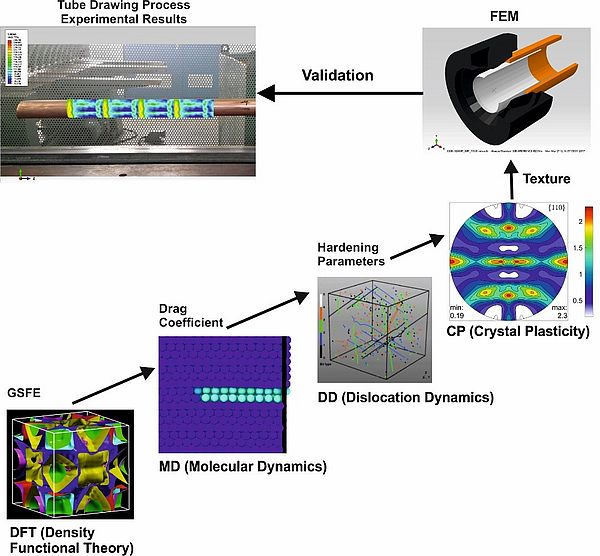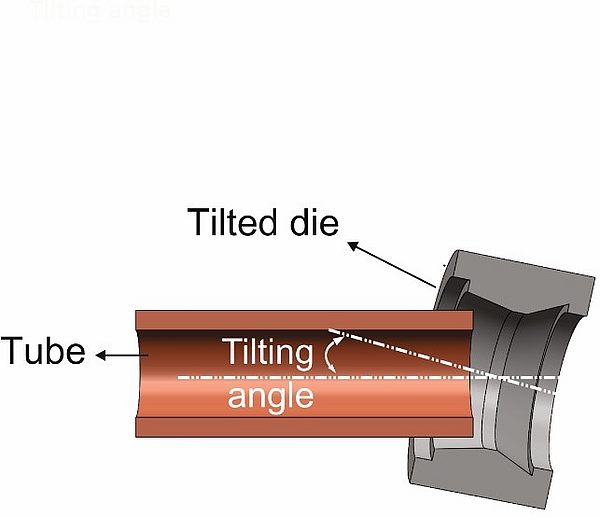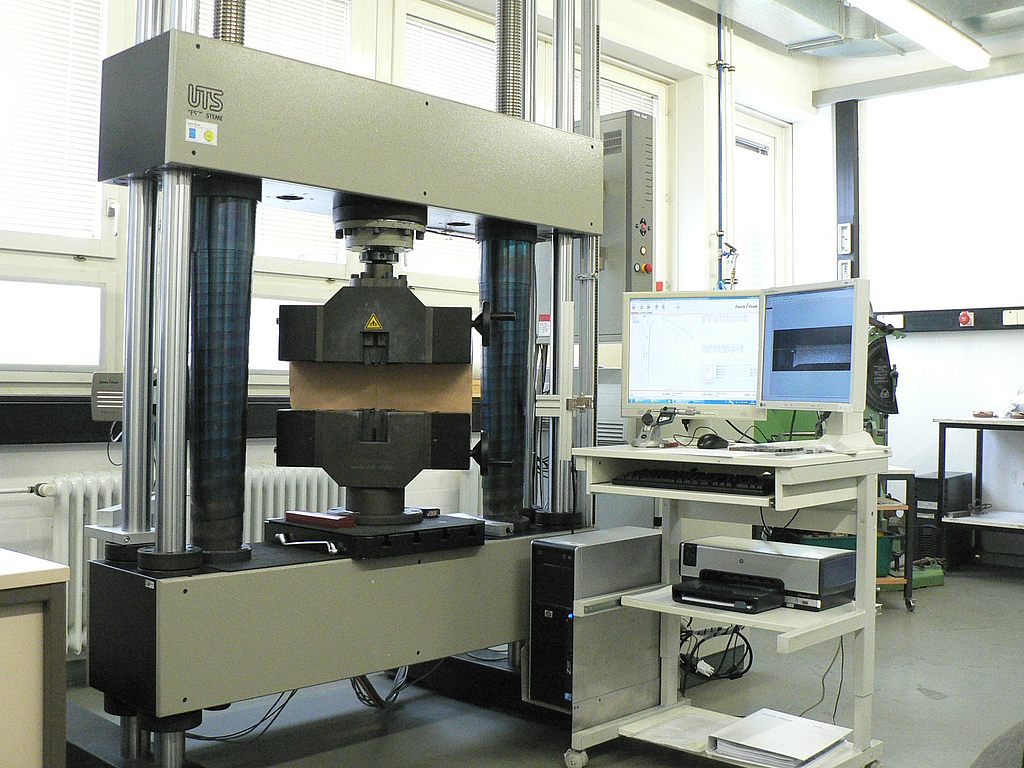Study of Anisotropic Behavior in Tube Drawing Process using Multiscale Simulation
Contact Person: Dr. Somayeh Khani
https://gepris.dfg.de/gepris/projekt/447086260?language=de
In tube drawing, tubes are prone to imperfections – such as eccentricity, the deviation between max. and min. wall thickness in the tube - influencing their quality and performances. Its control is a challenge producing precise tubes. Using tilting of the tube or shifting the die eccentricity and even residual stress state control is possible as could be shown within DFG: PA 837/38-1; Cu tubes of different dimensions were used undergoing some drawing steps and tilting/offset conditions. Moreover, the evolution of the eccentricity, residual stresses, and anisotropic behavior during process were studied experimentally and simulated. The results of simulation were in good agreement with the experimental data. A 3D-FEM model using ABAQUS software including Crystal Plasticity (CP) approach was developed for better understanding of the process. However, the flow rule values in the CP model and the necessary elastic and plastic parameters were literature data and imported to the FEM calculations.
Since these parameters are directly in conjunction with structure and properties of the material in lower scales, the main aim of this work is modifying the existing CP Finite Element (CPFE) model through multiscale simulation, so developing a simulation model based on the Integrated Computational Materials Engineering (ICME) concept to evaluate the anisotropic behavior of the material. However, the existing model will be first tested for Al tubes to check the feasibility of the model developed for Cu tubes for other materials.
The multiscale methodology will be used to achieve all the necessary parameters for the final CPFE model. It will also provide a more precise and accurate predictive tool for analyzing the forming processes because the prediction of mechanical properties in structure level will be performed regarding the effect of features in smaller scales. Moreover, using ICME approach, a framework will be developed that is linking four desperate length scales (electronic-atomic-micro-meso) for the prediction of materials behavior during tube drawing. It should be also possible to be usable for other parameters like different materials, different amounts of reduction, and various tilting/offset values as well as – finally - for other forming processes. For this aim, Dislocation Dynamics (DD) simulations will be used to define the hardening rule constants. Therefore, the anisotropic hardening parameters for both Cu and Al will be calculated by DD simulations (microscale). An input for the DD calculations will be the dislocation mobility, which will be achieved by Molecular Dynamics (MD) calculations (atomic). Anisotropic elastic constants will be calculated by Modified Embedded Atomic Method (MEAM), to be used to achieve the required potentials for the MD calculations as well. At electronic scale, Density Functional Theory (DFT) approach will be used to get the generalized Stacking Fault energy (GSFE) and energy variations as a function of the lattice parameter. Finally, this framework to be developed will be validated with experimentally measured results.
- Foadian, F., Khani, S., Carradó, A., Brokmeier, H. G. & Palkowski, H. Multiscale Simulation Study on the Anisotropic Behavior of Seamless Copper Tubes Processed under Varied Conditions. J. Manuf. Process. 56, 258–270 (2020).


